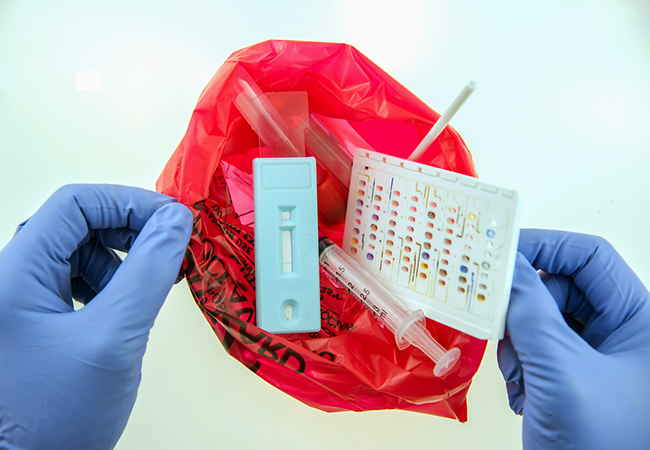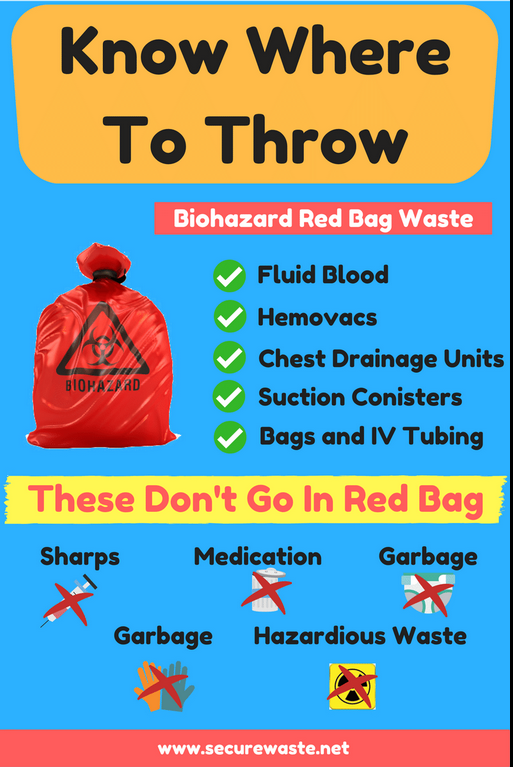Proactive Health And Wellness Solutions: Selecting the very best Medical Waste Removal Near You
Proactive Health And Wellness Solutions: Selecting the very best Medical Waste Removal Near You
Blog Article
Stay Ahead of Laws: Specialist Advice on Medical Waste Disposal
In a globe where the healthcare market is frequently evolving, it is crucial for clinical centers to stay ahead of guidelines when it involves the correct disposal of clinical waste. With rigorous guidelines and frequent regulatory changes, it can be challenging to navigate the complexities of this procedure. Nevertheless, with experienced advice, centers can make sure conformity and minimize threats associated with inappropriate garbage disposal. From comprehending the different categories of clinical waste to implementing the right collection and segregation approaches, this conversation will certainly provide valuable understandings and workable suggestions to help facilities remain in advance of guidelines in the ever-changing landscape of clinical garbage disposal.
Comprehending Clinical Waste Categories
Comprehending clinical waste classifications is important for correct disposal and administration in medical care facilities. Medical waste describes any waste produced by medical care activities that might pose a hazard to public health or the setting. It is important to classify clinical waste precisely to guarantee its safe handling, therapy, transportation, and disposal.
There are numerous categories of medical waste that medical care facilities need to be acquainted with. One of the most common classifications consist of infectious waste, pathological waste, sharps waste, pharmaceutical waste, and chemical waste. Each classification has details guidelines and policies for its correct monitoring and disposal.
Pathological waste refers to human cells, body organs, or body components that call for unique handling and disposal. Drug waste makes up ended, unused, or polluted medications that need careful handling and disposal.
Staying Up-To-Date With Regulatory Changes
Remaining current with regulatory changes is essential for healthcare facilities to make certain conformity and correct monitoring of medical waste disposal. medical waste removal near me. With guidelines constantly progressing, it is necessary for health care facilities to stay current to stay clear of charges, fines, and possible damage to the atmosphere and public health and wellness
To stay in advance of regulative changes, healthcare centers must establish a system for surveillance and monitoring updates. This can be done by subscribing to regulatory e-newsletters, going to conferences and workshops, and actively joining sector associations. In addition, facilities should assign a team member or team liable for staying educated and distributing info to appropriate stakeholders.
Normal communication with governing agencies is also essential. Medical care facilities need to establish partnerships with regional, state, and government companies to guarantee they recognize any type of changes in guidelines that may influence their waste management methods. This can be done via routine meetings, engagement in public remark periods, and positive involvement with regulatory companies.
In addition, health care centers must think about partnering with waste monitoring business that specialize in clinical waste disposal (medical waste disposal services with WasteX). These firms are usually skilled in the current policies and can supply guidance and support to make sure conformity
Executing Appropriate Collection and Partition Approaches
To effectively manage medical waste disposal, medical care facilities must develop correct collection and partition approaches in conformity with regulative standards. Applying these approaches makes certain the safe handling and disposal of possibly hazardous materials, safeguards the environment, and reduces the risk of infections and injuries to health care employees and the public.
Proper collection and partition approaches entail the usage of marked containers and labeling systems. Medical care centers must supply clearly labeled containers for different sorts of clinical waste, such as sharps, transmittable waste, pharmaceutical waste, and non-hazardous waste. These containers must be color-coded and clearly marked to avoid complication and promote very easy identification.
Additionally, healthcare facilities must train their team on the appropriate procedures for gathering and setting apart clinical waste. This includes informing them on the different sorts of waste, the appropriate containers to make use my explanation of, and the value of adhering to laws and guidelines. Regular training sessions and correspondence course must be carried out to ensure that employee continue to be current on finest practices.
In addition, health care centers ought to develop a system for routine collection and disposal of clinical waste. This may entail partnering with certified waste monitoring business that focus on clinical waste disposal. These firms will make certain that the gathered waste is delivered and thrown away in compliance with regulative needs.
Choosing the Right Disposal Approaches

Incineration is among one of the most usual and effective techniques for taking care of certain kinds of medical waste, such as pathological waste and sharps. It includes the controlled combustion of waste at heats, minimizing it to ash. Incineration can release damaging toxins right into the air and add to air pollution.

Chemical treatment includes the usage of chemicals to reduce the effects of the waste and sanitize. Microwave therapy utilizes microwave power to warmth and decontaminate the waste.
Ensuring Compliance Through Documentation and Training
After thoroughly thinking about the ideal disposal methods for medical waste, healthcare facilities must ensure compliance with laws and decrease ecological effect by executing reliable documentation and training treatments. This action is essential in maintaining a lasting and risk-free atmosphere for both healthcare employees and the public.

Healthcare workers who deal with clinical waste ought to get ideal training on waste segregation, managing, and disposal procedures. By giving comprehensive training, medical care centers can equip their team to make informed choices and minimize the risk of improper waste disposal.
Conclusion
To conclude, staying in advance of regulations in clinical garbage disposal is crucial for healthcare centers. medical waste removal services. Comprehending the different categories of clinical waste, remaining updated with regulatory changes, applying correct collection and segregation methods, choosing the proper disposal approaches, and making sure compliance via documents and training are all necessary steps. By adhering to these standards, health care organizations can properly take care of and dispose of medical waste in a secure and responsible manner
From recognizing the different groups of clinical waste to applying the ideal collection and segregation approaches, this discussion will certainly offer valuable understandings and actionable pointers to help centers stay in advance of policies in the ever-changing landscape of clinical waste disposal. - medical waste disposal services with WasteX
The most common categories include contagious waste, pathological waste, sharps waste, pharmaceutical waste, and chemical waste. Medical care facilities ought to offer plainly classified containers for various kinds of clinical waste, such as sharps, contagious waste, pharmaceutical waste, and non-hazardous waste. Healthcare facilities should establish an extensive system to tape and track all elements of clinical waste disposal, consisting of kinds of waste created, amounts, and disposal approaches made use of. Medical care employees that manage medical waste should receive appropriate training on waste segregation, handling, and disposal treatments.
Report this page